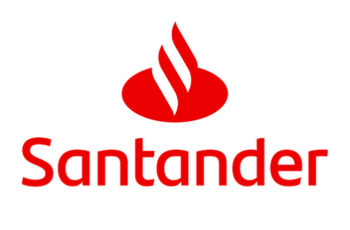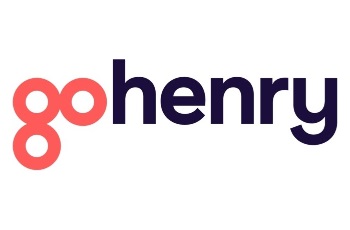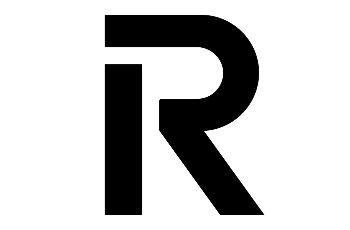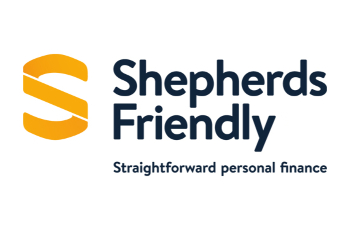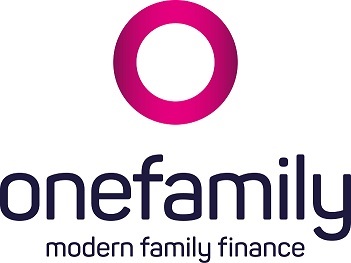This comparison simply includes all savings accounts.
Junior ISAS
Disclaimer: Stocks and Shares Junior ISAs offer the potential for higher returns than Cash Junior ISAs, particularly if you choose to invest for the long-term. However, you do need to know that, as the underlying value of your child’s investment is linked to the fluctuations of the stock market; although the value cannot fall there is no guarantee that bonuses will be added each year.
Includes a Unitised With-Profits fund that comes with a guaranteed minimum payout when the child turns 18, provided no switches or withdrawals are made. Welcome Gift: After you start investing Scottish Friendly will pay £50 into the Junior ISA for your child
Disclaimer: The value of your investments can fall as well as rise, so your child could get back less than you paid in.
Disclaimer: Stocks and Shares Junior ISAs offer the potential for higher returns than Cash Junior ISAs, particularly if you choose to invest for the long-term. However, you do need to know that, as the underlying value of your child’s investment is linked to the fluctuations of the stock market; although the value cannot fall there is no guarantee that bonuses will be added each year.
Guide to the Best Junior ISA Rates in the UK
What is a Junior ISA?
A Junior ISA is a tax-free savings or investment account that can be opened for a child under the age of 18 who is a UK resident. It allows you to contribute up to a specified annual limit (subject to change each tax year) without incurring income tax or capital gains tax on the returns. The child gains full access to the funds once they turn 18, at which point the Junior ISA will automatically convert into an adult ISA, giving them the freedom to continue saving or using the funds as they see fit.
The two main types of Junior ISAs are:
- Cash Junior ISA: This type of account functions similarly to a regular savings account, where the money is held in cash, and the interest earned is tax-free. It offers a low-risk option, suitable for those who prefer a guaranteed return.
- Stocks and Shares Junior ISA: With this account, the contributions are invested in various financial instruments, such as stocks, bonds, and funds. It has the potential for higher returns over the long term, but it also carries a higher level of risk due to market fluctuations.
Eligibility and Contribution Limits
To open a Junior ISA, you need to be the child's parent or legal guardian. If you're not the parent, you can still contribute to an existing Junior ISA opened by the child's parents, as long as you stay within the annual contribution limit.
As of the current tax year, the annual Junior ISA contribution limit is £9,000. It's worth noting that any unused allowance from a given tax year cannot be carried over to the next year. Therefore, it's advisable to make the most of the available allowance each year to maximise the benefits of tax-free savings and potential investment growth.
Junior ISAs are a fantastic way to give your child a head start in their financial journey. However, it's crucial to carefully consider your options and assess the level of risk you're willing to take based on your child's needs and your financial goals.
Benefits of Junior ISAs
Junior ISAs offer a range of advantages that make them an attractive choice for long-term savings and investments for your child's future.
Tax-Free Savings
One of the most significant advantages of Junior ISAs is the tax-free nature of the returns. Unlike regular savings accounts, where interest earnings are subject to income tax, Junior ISAs allow your child's savings to grow without any tax deductions. This tax efficiency can lead to substantial savings over time, especially when considering the compounding effect of reinvested earnings.
Compound Interest and Long-Term Growth
By starting early and consistently contributing to a Junior ISA, you can harness the power of compounding interest. The compounding effect occurs when the interest or investment returns you earn on your contributions are reinvested, generating additional earnings in subsequent periods. Over the long term, this compounding growth can significantly boost the overall value of the account.
For example, let's consider two scenarios:
- Regular Savings Account: Saving £200 per month at an average annual interest rate of 1.5% over 18 years would yield approximately £45,675.
- Junior ISA: Investing the same amount in a Junior ISA at an average annual return of 5% over 18 years would result in approximately £56,070.
As you can see, the power of compound interest in the Junior ISA scenario leads to a significantly higher final amount.
Building a Financial Safety Net for Your Child's Future
Opening a Junior ISA allows you to create a dedicated financial safety net for your child's future endeavors. Whether it's funding their university education, supporting their first steps into the property market, or providing them with a solid financial foundation as they begin adulthood, a Junior ISA can play a crucial role in achieving these aspirations.
By consistently contributing to the account and making informed investment choices, you can help ensure that your child has the resources they need to pursue their dreams without being burdened by financial constraints.
Factors to Consider When Choosing a Junior ISA
Selecting the right Junior ISA for your child is a crucial decision that can significantly impact their financial future. It's essential to weigh various factors to ensure that the chosen account aligns with your financial goals and provides the best possible returns. Here are some key considerations to keep in mind:
Interest Rates and Potential Returns
When comparing Junior ISA providers, pay close attention to the interest rates offered for Cash Junior ISAs or the potential returns for Stocks and Shares Junior ISAs. Higher interest rates or better-performing investment options can lead to greater growth over time, making a significant difference in the final amount accumulated by the time your child reaches 18.
Before making a decision, consider the historical performance of investment funds, as well as the provider's track record in delivering competitive returns to investors.
Charges and Fees
Different Junior ISA providers may impose various charges and fees, which can impact the overall growth of your child's savings. These fees can include:
- Annual Management Charges: These are fees deducted by the provider for managing the investment portfolio. Lower management charges can lead to higher net returns for your child's account.
- Dealing Fees: For Stocks and Shares Junior ISAs, buying and selling investments may incur dealing fees. Look for providers that offer competitive dealing charges or even commission-free trading.
- Transfer-Out Fees: Some providers may charge a fee if you decide to transfer your Junior ISA to another provider. Check for any potential transfer-out fees before opening an account.
Flexibility and Accessibility of Funds
Consider the flexibility and accessibility of the Junior ISA, especially if you anticipate needing access to the funds before your child turns 18. While Junior ISAs are designed as long-term savings vehicles, unexpected circumstances may arise, necessitating withdrawals.
- Partial Withdrawals: Some Junior ISAs allow partial withdrawals, while others may not. Determine whether the provider permits partial withdrawals without penalty, and if there are any limits on how much you can withdraw.
- Notice Periods: If withdrawals are allowed, check if there's a notice period requirement. Some providers may require you to give advance notice before making a withdrawal.
Investment Options and Risk Level
If you opt for a Stocks and Shares Junior ISA, evaluate the available investment options and the level of risk associated with each. Different providers offer various funds or portfolios with varying risk profiles. Consider your risk tolerance and your child's investment horizon when choosing the most suitable investment strategy.
- Diversification: Look for providers that offer diversified investment options. Diversification can help reduce risk by spreading investments across different asset classes and industries.
- Risk Assessments: Some providers may offer risk assessment tools to help you determine the most appropriate investment approach based on your financial goals and risk tolerance.
Top Junior ISA Providers in the UK
When it comes to selecting a Junior ISA provider, it's essential to choose a reputable and reliable institution that offers competitive rates and excellent service. Here are some of the top Junior ISA providers in the UK, along with their key features and benefits:
ABC Bank Junior ISA
- Features and Benefits:
- Offers both Cash Junior ISA and Stocks and Shares Junior ISA options to cater to different risk appetites.
- Competitive interest rates for the Cash Junior ISA, providing a secure and steady growth option for risk-averse investors.
- Stocks and Shares Junior ISA offers a range of diversified investment portfolios managed by experienced fund managers.
- Provides online account management for easy access and monitoring of your child's savings.
- Interest Rates and Terms:
- Cash Junior ISA: Current interest rate of 2.5% AER.
- Stocks and Shares Junior ISA: Historical average return of 6.8% per annum.
- Eligibility Requirements:
- Available to UK residents and children aged 17 or younger.
- Minimum initial deposit of £100 for both Cash and Stocks and Shares Junior ISAs.
XYZ Investment Company Junior ISA
- Features and Benefits:
- Specialises in Stocks and Shares Junior ISAs, offering a wide range of investment opportunities.
- Provides access to expert financial advisors to help you make informed investment decisions.
- Offers flexible contribution options, allowing you to adjust the amount you invest as your financial situation evolves.
- Investment Options and Portfolios:
- Diverse range of investment funds catering to different risk levels, from low to high risk.
- Ethical investment options available for those interested in socially responsible investing.
- Charges and Fees:
- Annual Management Charge: 1.2% on Stocks and Shares Junior ISA investments.
- Dealing Fees: £10 per trade for buying and selling investments.
LMN Credit Union Junior ISA
- Features and Benefits:
- Ethical and community-focused institution, aligning with the values of socially responsible individuals.
- Offers competitive interest rates on Cash Junior ISA accounts.
- Provides financial education resources for young savers, encouraging financial literacy from an early age.
- Membership and Eligibility:
- Open to members of the credit union.
- Membership eligibility based on residency or employer affiliation.
- Interest Rates and Savings Options:
- Cash Junior ISA: Current interest rate of 3.2% AER.
- Offers additional savings accounts for children to build a comprehensive savings plan.
How to Open a Junior ISA
Documents and Information Required
Before you begin, make sure you have the following documents and information on hand:
- Proof of Identity: You'll need identification documents for both yourself and your child, such as passports or birth certificates.
- National Insurance Number: Provide your child's National Insurance number if they have one. If not, you can apply for one through the government website.
- Contact Information: Be ready to share your contact details, including your address, phone number, and email address.
Step-by-Step Application Process
- Research and Compare Providers: Start by researching different Junior ISA providers and comparing their features, rates, and investment options. Choose the one that best aligns with your financial goals.
- Complete Application Form: Once you've selected a provider, visit their website or branch and fill out the Junior ISA application form. You'll need to provide the necessary documents and information during this process.
- Choose Account Type: Decide whether you want a Cash Junior ISA, a Stocks and Shares Junior ISA, or a combination of both. This decision will impact the growth and risk associated with the account.
- Set Up Regular Contributions: Determine the amount and frequency of your contributions. Regular contributions will help your child's savings grow steadily over time. Consider setting up a direct debit for ease of payment.
- Submit Application and Deposit: After completing the application form and providing all required documents, submit the application to the chosen provider. You may also need to make an initial deposit, which can vary depending on the provider.
- Receive Account Details: Once your application is processed and approved, you'll receive the account details, including the account number and online access information.
Example: Automatic Savings Plan
Some providers offer an automatic savings plan for Junior ISAs. For instance, the ABC Bank Junior ISA allows parents to set up an automatic monthly transfer from their current account to their child's Junior ISA. This way, you can ensure regular contributions without having to remember to make manual payments each month. It's a convenient way to build savings steadily and consistently.
Maximising Your Junior ISA's Potential
To make the most of your child's Junior ISA and maximise its potential for long-term growth, consider implementing the following strategies and tips:
Top Tips for Saving More
- Start Early: The earlier you open a Junior ISA and begin contributing, the more time the savings have to grow. Even small regular contributions can add up significantly over the long term.
- Leverage Compound Interest: Take advantage of compound interest by reinvesting any returns earned on the account. This compounding effect can substantially boost the overall value of the Junior ISA.
- Increase Contributions When Possible: As your financial situation allows, consider increasing your monthly contributions to accelerate the growth of the Junior ISA.
- Utilise Windfalls: If your child receives any monetary gifts or windfalls, consider directing a portion of the funds into their Junior ISA. It's an effective way to put unexpected funds to good use and enhance the savings pot.
Reviewing and Adjusting Investment Strategies
- Monitor Investment Performance: Keep a close eye on the performance of the investments within the Stocks and Shares Junior ISA. Periodically review the returns and assess whether they align with your financial goals.
- Rebalance the Portfolio: Over time, the allocation of funds in the portfolio may shift due to varying market conditions. Rebalancing the portfolio periodically ensures that the investment strategy remains aligned with your risk tolerance and goals.
- Consult with Financial Advisors: If you're unsure about managing the investment side of the Junior ISA, consider seeking advice from a financial advisor. They can provide insights and recommend suitable investment options based on your child's unique circumstances.
Keeping Track of Performance and Growth
- Regularly Review Statements: Stay informed about the growth of your child's Junior ISA by reviewing the account statements provided by the ISA provider. This will give you a clear picture of how the savings are progressing.
- Set Financial Goals: Establish specific financial goals for your child's future. Whether it's funding their university education, helping them buy their first home, or supporting their career aspirations, having clear goals can guide your saving and investment strategy.
- Educate Your Child: As your child grows older, involve them in discussions about their Junior ISA and financial planning. Educating them about the importance of saving and investing from a young age can instill valuable financial habits for the future.
Frequently Asked Questions (FAQs) about Junior ISAs
What happens to the Junior ISA when the child turns 18?
When the child reaches 18, the Junior ISA automatically converts into an adult ISA. At this point, the child gains full control and access to the funds. They can choose to continue saving and investing in the ISA or withdraw the funds for any purpose they wish. It's worth noting that the adult ISA contribution limits will apply once the account converts.
Can I switch Junior ISA providers?
Yes, you can transfer your child's Junior ISA from one provider to another. Transfers between Junior ISAs are free and straightforward. It's essential to research and compare different providers to find one that better suits your child's financial goals and offers competitive rates.
Is there a penalty for withdrawing funds early?
With a Junior ISA, the child gains access to the funds once they turn 18. However, before this age, withdrawals are not permitted, except in the case of the child's death or terminal illness. It's essential to commit to a Junior ISA with the understanding that it is a long-term savings and investment vehicle for your child's future.
Can I have both a Cash Junior ISA and a Stocks and Shares Junior ISA for my child?
Yes, you can open both types of Junior ISAs for your child. However, the combined contributions to both accounts must not exceed the annual contribution limit, which is £9,000 for the current tax year. This means you can allocate contributions between the Cash and Stocks and Shares Junior ISAs based on your risk preferences and financial goals.

